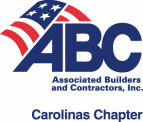Last Thursday, November 14, 2013, I participated in a webinar hosted by Engineering News-Record® on “The Five Risks You Never Saw Coming,” which is still available on-demand and free to the public on ENR’s webinar page.
The first risk addressed by the panel is the subject of this post: the risk that a private owner’s financial well might run dry.
As one of the panelists, Atlanta construction attorney Gina Vitiello (@GinaVitiello on Twitter), discussed, project funding can fail for a number of reasons. The owner might run out of capital funds, perhaps because it overestimated the availability of project funding or underestimated the total costs of the endeavor. Or the owner might lose its financing, for example by defaulting on its loan obligations. Or the lending institution financing the project might fail.
No matter how or why the financial well might run dry, the consequences for the prime contractor, construction manager at risk or design-builder can be catastrophic. What can be done to guard against this risk?
As Ms. Vitiello discussed, and as I elaborate upon below, the prudent prime will consider the following measures:
(1) Verify that the owner has made adequate arrangements for project financing. Negotiate for a contract clause that allows you to verify the owner’s financial arrangements and then rely on that clause before commencing work. Standard form contracts typically include such a clause. By way of example, the AIA A201-2007 states, in pertinent part, as follows:
Section 2.2.1: Prior to commencement of the Work, the Contractor may request in writing that the owner provide reasonable evidence that the Owner has made financial arrangements to fulfill the Owner’s obligations … Thereafter, the Contractor may only request such evidence if (1) the Owner fails to make payments…; (2) a change in the Work materially changes the Contract Sum; or (3) the Contractor identifies in writing a reasonable concern regarding the Owner’s ability to make payment when due.
ConsensusDOCS 200 goes a step further, providing a right to seek financial information throughout the life of the project as a condition precedent to continued performance:
Section 4.2: Prior to commencement of the Work and thereafter at the request of the Contractor, the Owner shall provide the Contractor with evidence of Project financing. Evidence of such financing shall be a condition precedent to the Contractor’s commencing or continuing the Work. The Contractor shall be notified prior to any material change in the Project financing.
If one of these forms is being used on your project, make sure the applicable clauses haven’t been gutted by supplemental general conditions or otherwise. And if a manuscript contract is being used, seek to negotiate comparable language in your deal.
Not sure how best to approach the owner about its financial arrangements once the contract is signed? Then check out ConsensusDOCS 290, “Guidelines for Obtaining Owner Financial Information,” which includes tips galore for “pre-qualifying” the owner.
(2) Negotiate for the ability to walk away from the project due to non-payment. Payment failure should be identified in the contract as a material breach, which under the laws of most jurisdictions will excuse future performance — and incursion of cost — by the non-breaching contractor. Negotiate for the shortest possible window for declaring breach, such as 15-30 days after a periodic payment is due.
(3) Get paid timely for stored and specially fabricated materials. Negotiate for a contract clause allowing for payment of stored and/or specially fabricated materials even if not yet incorporated into the work, and bill for those materials at the time of purchase.
(4) Add conditional payment clauses in subcontracts. Pay-when-paid and pay-if-paid clauses are intended to shield prime contractors from payment liability to subs unless and until payments are received from the owner. Stated differently, such clauses transfer the risk of owner non-payment down the contractual chain. Note that while this type of risk-shifting might be permitted in other states, it generally isn’t in North Carolina. See, e.g., N.C. Gen. Stat. § 22C-2.
(5) Sign change orders timely. Get agreement as to changed work in writing as soon as possible to ensure a memorialized, mutual understanding as to project scope at all times. That will mitigate controversy in the event of a payment default or suspension for convenience.
(6) Let your voice be heard at the first sign of trouble. Contact the owner’s representative and demand answers if you experience a slow payment or a payment for less than the full amount invoiced. Invoke whatever contract clauses might be applicable as leverage.
(7) Protect your mechanics’ lien rights in states requiring preliminary notice. Once work begins, mechanics’ liens are the best hedge against the risk of owner non-payment. Increasingly, however, states like North Carolina are requiring preliminary notice from most, if not all, project participants to preserve lien rights that might be needed down-the-road. Always, always, ALWAYS provide that preliminary notice; it’s not a lien, rather a reservation of lien rights in the  event they’re ever necessary. See my previous blog post about North Carolina’s new notice to lien agent statute and visit LiensNC.com to file your Notice to Lien Agent today.
event they’re ever necessary. See my previous blog post about North Carolina’s new notice to lien agent statute and visit LiensNC.com to file your Notice to Lien Agent today.
Do you have other suggestions for guarding against the risk that the owner’s financial well might run dry? I would love to hear them. As always, comments and questions are welcome!
* Photo Credit: You can see this and other works by inkknife_2000 at the artist’s Flicker Photostream.








My business partners were searching for CA Preliminary 20-day Notice last month and used an online service that hosts a lot of fillable forms . If people are requiring CA Preliminary 20-day Notice too , here’s https://goo.gl/t7eKOL.